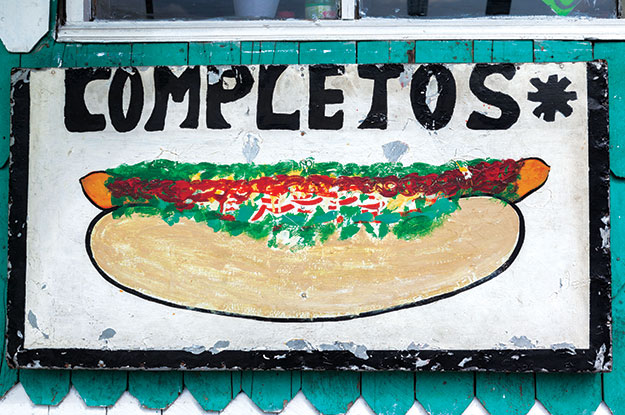In the acclaimed Chilean web series “Gringolandia,” comedian Koke Santa Ana plays a befuddled visitor to New York who tries a hot dog from one of the city’s ubiquitous sidewalk vendors — only to recoil in disgust. A plain sausage enclosed in a tasteless bun seems underdressed by Chilean standards. The series then follows his homesick character’s quest to introduce New Yorkers to what Chileans consider a “real” hot dog: the completo.
Distinguished by their copious toppings, completos can include mayonnaise, tomato, shoestring potatoes, sauerkraut and, arguably, the most essential ingredient: mashed avocado. “The completo is special because all Chileans can relate to it, especially since it’s so cheap,” Santa Ana told AQ. At a typical street vendor, completos will run you 1,000 pesos, or about $1.75.
According to most accounts, the completo was born around 1920, when Santiago restaurateur Eduardo Bahamondes Muñoz imported the idea of the hot dog from the United States. To please a demanding clientele, Bahamondes added ingredients like avocado, mayonnaise and onion — and the new sensation spread across the country. Today, varieties like the Alemán, Dinámico and Italiano cater to every taste, but customers should be forewarned: As the number and texture of toppings increase, so do the challenges of eating it without making a mess.
In Santiago, those looking for a traditional completo experience can visit Dominó near La Moneda, while the hip eatery Hogs, with locations in Providencia and Lastarria, offers a more gourmet version. Restaurants in other Chilean cities also offer their own interpretations, and even forlorn Chileans in New York can find a completo if they look hard enough. Just head to Queens’ San Antonio Bakery #2.
—
Luksic is an associate at AS/COA



